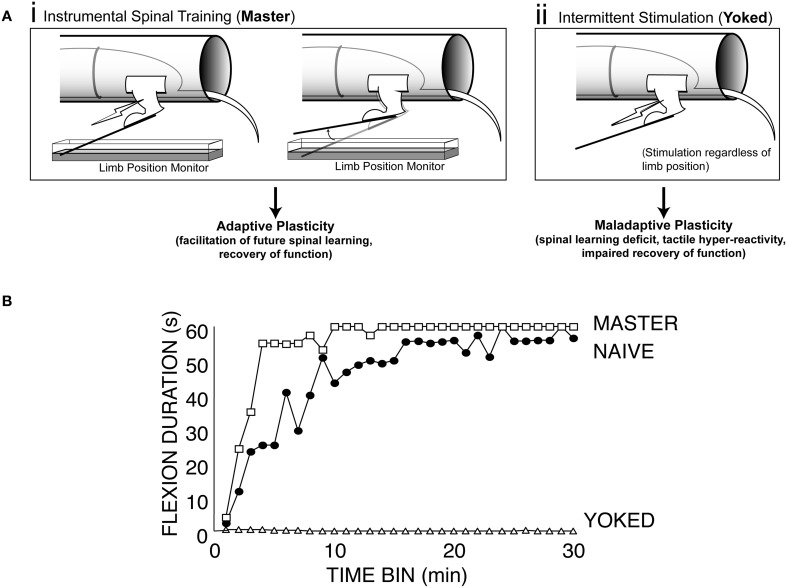Figure 1.
Effects of instrumental vs. uncontrollable nociceptive stimulation on spinal function. (A) Modes of stimulation. (i) Instrumental spinal training. For Master rats, electrical stimulation is delivered to the tibialis anterior muscle when the hindlimb is unflexed, and terminated when the hindlimb is flexed. Over a 30 min training session, master rats learn to keep the hindlimb flexed to reduce stimulus exposure (spinal learning). This spinal training promotes future adaptive plasticity. (ii) Uncontrollable stimulation. The yoked rats receive stimulation whenever the master does, regardless of their hindlimb position. (B) Exposure to this uncontrollable (yoked) stimulation causes a learning deficit that is evident when these rats are later tested with the spinal learning assay. Spinal learning is assessed by monitoring the ability of spinally transected rats to maintain the hindlimb in a flexed position as manifested by increasing average response duration in each 1 min time bin for 30 min test during instrumental training. Modified from Grau et al. (1998).

